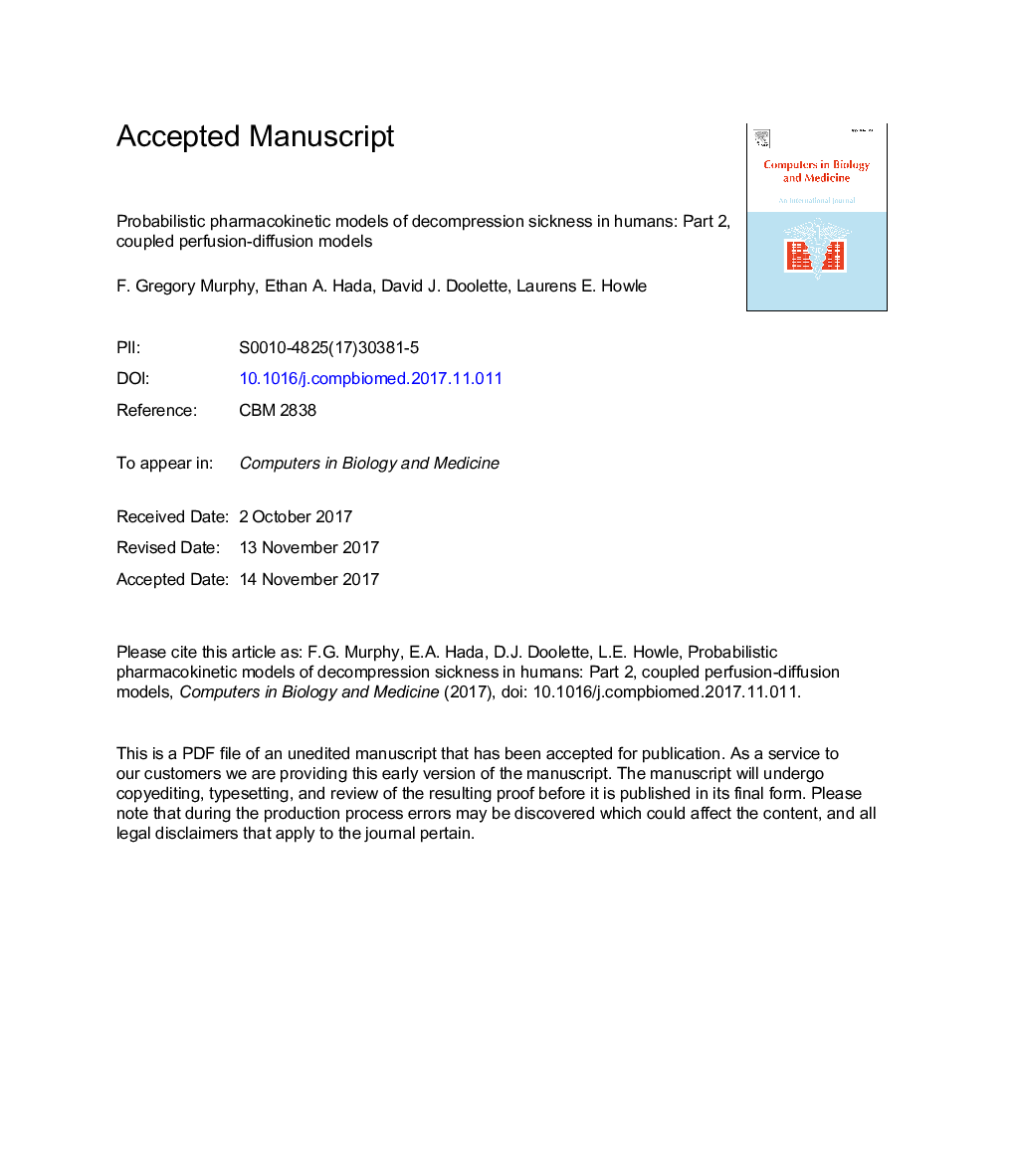| Article ID | Journal | Published Year | Pages | File Type |
|---|---|---|---|---|
| 6920693 | Computers in Biology and Medicine | 2018 | 28 Pages |
Abstract
Decompression sickness (DCS) can be experienced following a reduction in ambient pressure; such as that associated with diving or ascent to high altitudes. DCS is believed to result when supersaturated inert gas dissolved in biological tissues exits solution and forms bubbles. Models to predict the probability of DCS are typically based on nitrogen and/or helium gas uptake and washout in several theoretical tissues, each represented by a single perfusion-limited compartment. It has been previously shown that coupled perfusion-diffusion compartments are better descriptors than solely perfusion-based models of nitrogen and helium uptake and elimination kinetics observed in the brain and skeletal muscle of sheep. In this work, we examine the application of these coupled pharmacokinetic structures with at least one diffusion compartment to the prediction of the incidence of decompression sickness in humans. We compare these models to LEM-NMRI98, a well-described U.S. Navy gas content model, consisting of three uncoupled perfusion-limited compartments incorporating oxygen and linear-exponential kinetics. Pharmacokinetic gas content models with a diffusion component describe the probability of DCS in human bounce dives made with air, single non-air bounce dives, and oxygen decompression dives better than LEM-NMRI98. However, for the full data set, LEM-NMRI98 remains the best descriptor of the data.
Related Topics
Physical Sciences and Engineering
Computer Science
Computer Science Applications
Authors
F. Gregory Murphy, Ethan A. Hada, David J. Doolette, Laurens E. Howle,
